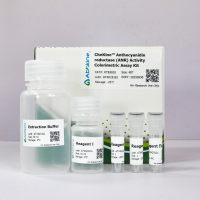Detection of Sensitized Nerve Responses: Dorsal Root Reflexes, Live Cell Calcium, and ROS Imaging
互联网
互联网
相关产品推荐

Hemagglutinin/HA重组蛋白|Recombinant H1N1 (A/California/04/2009) HA-specific B cell probe (His Tag)
¥2570

Recombinant-Rat-Ninjurin-1Ninj1Ninjurin-1 Alternative name(s): Nerve injury-induced protein 1
¥10136

Live & DeadTM 动物细胞活力/毒性检测试剂盒 (Calcein AM, PI)
¥202

CheKine™ 线粒体活性氧(ROS)产生速率检测试剂盒(荧光法)
¥598

Recombinant-Nicotiana-tabacum-Probable-aquaporin-TIP-type-RB7-18CProbable aquaporin TIP-type RB7-18C Alternative name(s): RT-TIP TobRB7 Tonoplast intrinsic protein, root-specific RB7-18C
¥11004
相关问答

